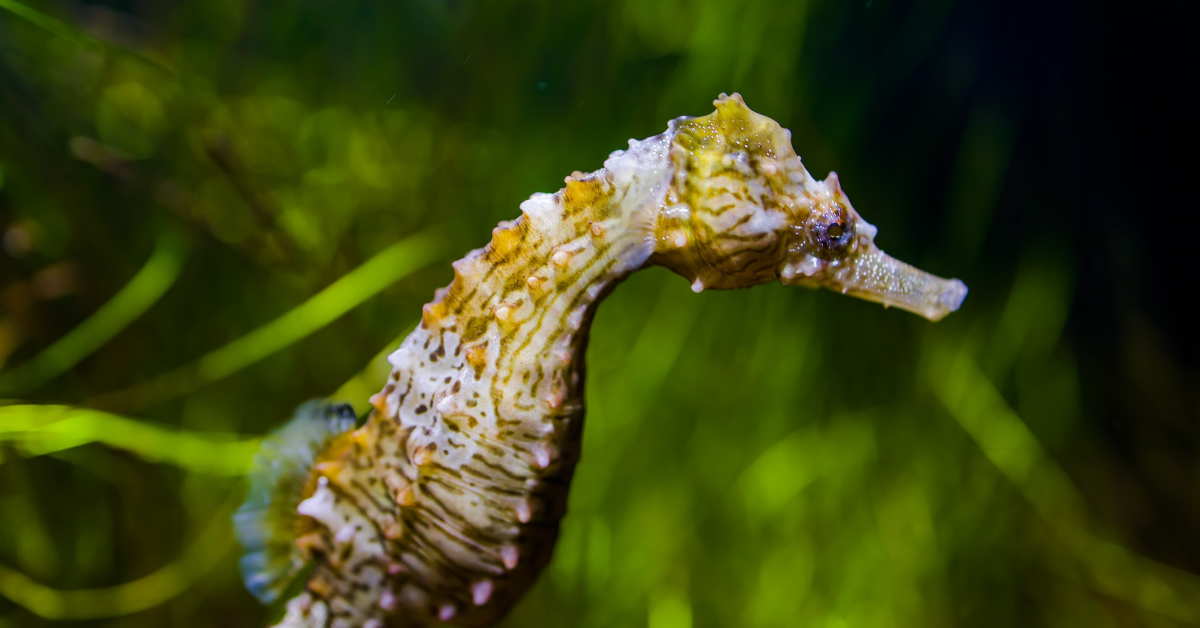The Fascinating World of Seahorses: An Exploration of These Mysterious Creatures

Seahorses are a group of unique and fascinating creatures that belong to the syngnathid family, which also includes pipefish and seadragons. These small, slow-moving animals are known for their horse-like heads, prehensile tails, and bony plates on their skin.
They are found in warm, shallow waters around the world, and are most commonly found in the waters around Australia and Asia. Despite their popularity as pets, seahorses can be difficult to keep in captivity and require very specific care.
Some species of seahorses are endangered due to habitat loss, pollution, and overfishing, and efforts are being made to protect and conserve these amazing animals.
10+ Interesting Facts About Seahorses
- Seahorses are not actually fish, but rather belong to a group of animals known as syngnathids, which also include pipefish and seadragons.
- Unlike most other fish, seahorses do not have scales. Instead, they have a series of bony plates on their skin that provide protection and help them blend in with their surroundings.
- Seahorses are known for their unusual mating habits. The male seahorse carries the eggs in a special pouch on his belly until they hatch, and he is the one who gives birth to the young.
- Seahorses are found in warm, shallow waters around the world, but they are most commonly found in the waters around Australia and Asia.
- Seahorses are poor swimmers and tend to use their prehensile tails to anchor themselves to coral reefs or other structures in the water.
- Seahorses are popular as pets, but they require very specific care and can be difficult to keep in captivity.
- Some species of seahorses are endangered due to habitat loss, pollution, and overfishing. Efforts are being made to protect and conserve these unique animals.
- Seahorses come in a variety of colors, including yellow, orange, red, pink, green, and brown. The color of a seahorse can change depending on its surroundings, mood, and health.
- Seahorses have a unique way of feeding. They have a small, tubular mouth that they use to suck in small prey, such as plankton and shrimp. They have no teeth, so they have to swallow their food whole.
- Some species of seahorses can grow to be up to 14 inches (35 cm) long, while others are much smaller, with some species reaching only about 1 inch (2.5 cm) in length.
- Seahorses have excellent eyesight and can move their eyes independently of each other, which helps them keep an eye out for predators and prey.
- Seahorses are known for their unique, horse-like head and long, curled tail, but they also have other unique physical characteristics. For example, they have a long snout that they use to suck in their food, and they have a series of spines or ridges on their bodies that help them blend in with their surroundings.
- Seahorses are slow-moving creatures and are not known for being very active. They tend to spend most of their time stationary, using their tails to anchor themselves to coral reefs or other structures in the water.
- There are over 50 known species of seahorses, and they can be found in a variety of habitats, including coral reefs, mangroves, and seagrass beds.
In conclusion, seahorses are truly remarkable and captivating species that are worth learning more about. From their unusual mating habits and feeding methods to their unique physical characteristics and habitats, there is much to discover and appreciate about these fascinating creatures.
Whether you are a seasoned marine biologist or simply a lover of all things aquatic, learning more about seahorses is sure to be a rewarding and enriching experience.





